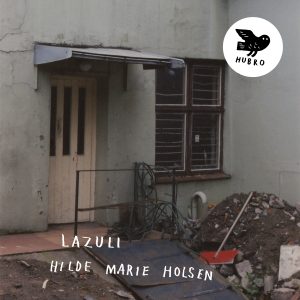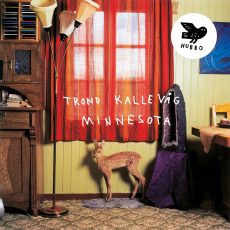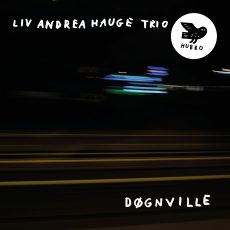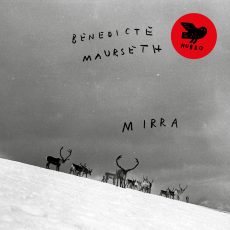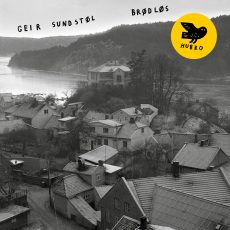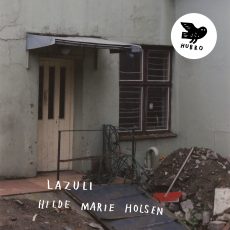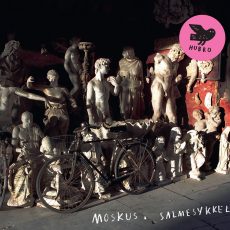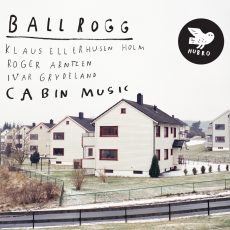Acclaimed trumpeter/soundscaper Hilde Marie Holsen follows up her critical hit mini-album debut, ‘Ask’, with the dark and mysterious ‘Lazuli’, a suite of four compositions inspired by visual art and named after minerals used to colour paint.
Colour pigments
“All the electronic sounds on the album are still live and processed trumpet, as they were on ‘Ask’” says Holsen. “Since ‘Ask’, I’ve been exploring, among other things, different ways to play the acoustic trumpet, both conventional and unconventional, trying to find different timbres that can also give a larger register of processed sound in the electronic soundscape. The music on ‘Lazuli’ began as improvisation, and then later on I’ve had the chance to do minor adjustments and edits on the tracks. ‘Lazuli’ came about through a collaboration with the artist and painter Tyra Fure Brandsæter. We’ve spent some time practising our art together, using each other’s expression as an inspiration for our own performance and artistic production. The titles on the album are an homage to this collaboration: they are all different types of minerals that have been used as colour pigment in painting.” The parallels with visual art are also evident in the way Hilde Marie Holsen has worked to develop each of the four pieces that make up ‘Lazuli’ (whose epic title track forms the concluding part of the quartet, at sixteen minutes the longest by some distance; the other titles are, in order, ‘Orpiment’, ‘Eskolaite’, and ‘Lapis’). It’s as if the background of silence or gentle electronic flutter against which she begins, corresponds to a painter’s preparatory white ground, which is then overlaid, sound upon sound, to create a thick impasto of textural detail heavy with potential meaning. In the palimpsest of the finished track, the clarity and immediacy of the recorded sound becomes almost three-dimensional, so real you feel you could reach out and touch it. ‘Lazuli’s’ combination of beautifully pure-toned, almost classical-sounding acoustic trumpet with an often dark and dense forest of electronically manipulated noise, is devastatingly effective. We seem to hear what might be snuffling animals or squelching sci-fi film FX alongside random clicks and glitches or rumbling, ominous, industrial machine-hum, together with gentler sounds from a more lyrical or pastoral realm: snatches of sleigh or shepherd bells, perhaps the mystical half-echo of a tamboura drone. As the ambient sounds have themselves been triggered by the trumpet through various electronic plug-ins, or captured by re-processing the instrument’s total sound-making potential, from blowing to sucking to playing as percussion, there is no real gap between one and the other, reinforcing the organic nature of the the entire artistic process, from first puff to final parp. Of course, there are numerous exemplars of an instrument-plus-electronics approach in improvised and experimental music, even those combining trumpet and electronics. We could consider Terry Riley’s tape-manipulations of Chet Baker in ‘Music For The Gift’ in Paris in 1963, the experiments of Jon Hassell, Mark Isham and Graham Haynes, as well as a very strong Norwegian tradition including Nils Petter Molvaer and Ave Henriksen. But no-one, perhaps, has gone as far as Hilde Marie Holsen in making the sound – the noise, even – such an equal partner to the music, and in creating such a seamless end-result to such a pleasingly natural-seeming process, where one musical instrument is used to provide both the form and the content, the figure and the ground. Listen, especially, to the final, title-track, of ‘Lazuli’ and you’ll see how far Hilde Marie Holsen can go.
Contrasts
‘Lazuli’s’ combination of beautifully pure-toned, almost classical-sounding acoustic trumpet with an often dark and dense forest of electronically manipulated noise, is devastatingly effective. We seem to hear what might be snuffling animals or squelching sci-fi film FX alongside random clicks and glitches or rumbling, ominous, industrial machine-hum, together with gentler sounds from a more lyrical or pastoral realm: snatches of sleigh or shepherd bells, perhaps the mystical half-echo of a tamboura drone. As the ambient sounds have themselves been triggered by the trumpet through various electronic plug-ins, or captured by re-processing the instrument’s total sound-making potential, from blowing to sucking to playing as percussion, there is no real gap between one and the other, reinforcing the organic nature of the the entire artistic process, from first puff to final parp.
Seamless
Of course, there are numerous exemplars of an instrument-plus-electronics approach in improvised and experimental music, even those combining trumpet and electronics. We could consider Terry Riley’s tape-manipulations of Chet Baker in ‘Music For The Gift’ in Paris in 1963, the experiments of Jon Hassell, Mark Isham and Graham Haynes, as well as a very strong Norwegian tradition including Nils Petter Molvaer and Ave Henriksen. But no-one, perhaps, has gone as far as Hilde Marie Holsen in making the sound – the noise, even – such an equal partner to the music, and in creating such a seamless end-result to such a pleasingly natural-seeming process, where one musical instrument is used to provide both the form and the content, the figure and the ground. Listen, especially, to the final, title-track, of ‘Lazuli’ and you’ll see how far Hilde Marie Holsen can go.










